
Cheek augmentation is a popular cosmetic procedure that enhances facial contours and provides a youthful appearance. Over the years, the demand for non-surgical cheek augmentation has surged, with many patients opting for dermal fillers to achieve a lifted and sculpted look.
Radiesse is a widely used dermal filler for cheek augmentation. It contains calcium hydroxylapatite, which provides immediate volume and stimulates collagen production, offering longer-lasting results. This dual action makes Radiesse an ideal choice for enhancing their cheekbones.
In this article, we will go over the benefits of using Radiesse for cheek augmentation, including expert insights and patient experiences to give you the full picture on how Radiesse helps lift and sculpt cheekbones.
Key Takeaways
- Radiesse is an effective dermal filler for cheek augmentation. It provides immediate volume and stimulates collagen production for long-term results.
- Injection techniques for Radiesse cheek augmentation involve careful patient selection, precise placement, and minimizing discomfort and bruising during the procedure.
- Clinical data supports the efficacy of Radiesse for cheek enhancement, showcasing long-term results and high patient satisfaction rates.
- Before-and-after photos demonstrate the significant facial contour and symmetry improvements with Radiesse treatment.
- Potential side effects of Radiesse cheek augmentation can be managed, and aftercare recommendations are essential for safe and effective treatment outcomes.
About: Doctor Medica is your trusted supplier of top-quality dermal fillers, viscosupplements, and more for your medical practice. We offer genuine products from leading brands at the lowest prices in the market. If you’re looking to buy Radiesse for your practice, contact the Doctor Medica today.
Understanding Radiesse for Cheek Augmentation
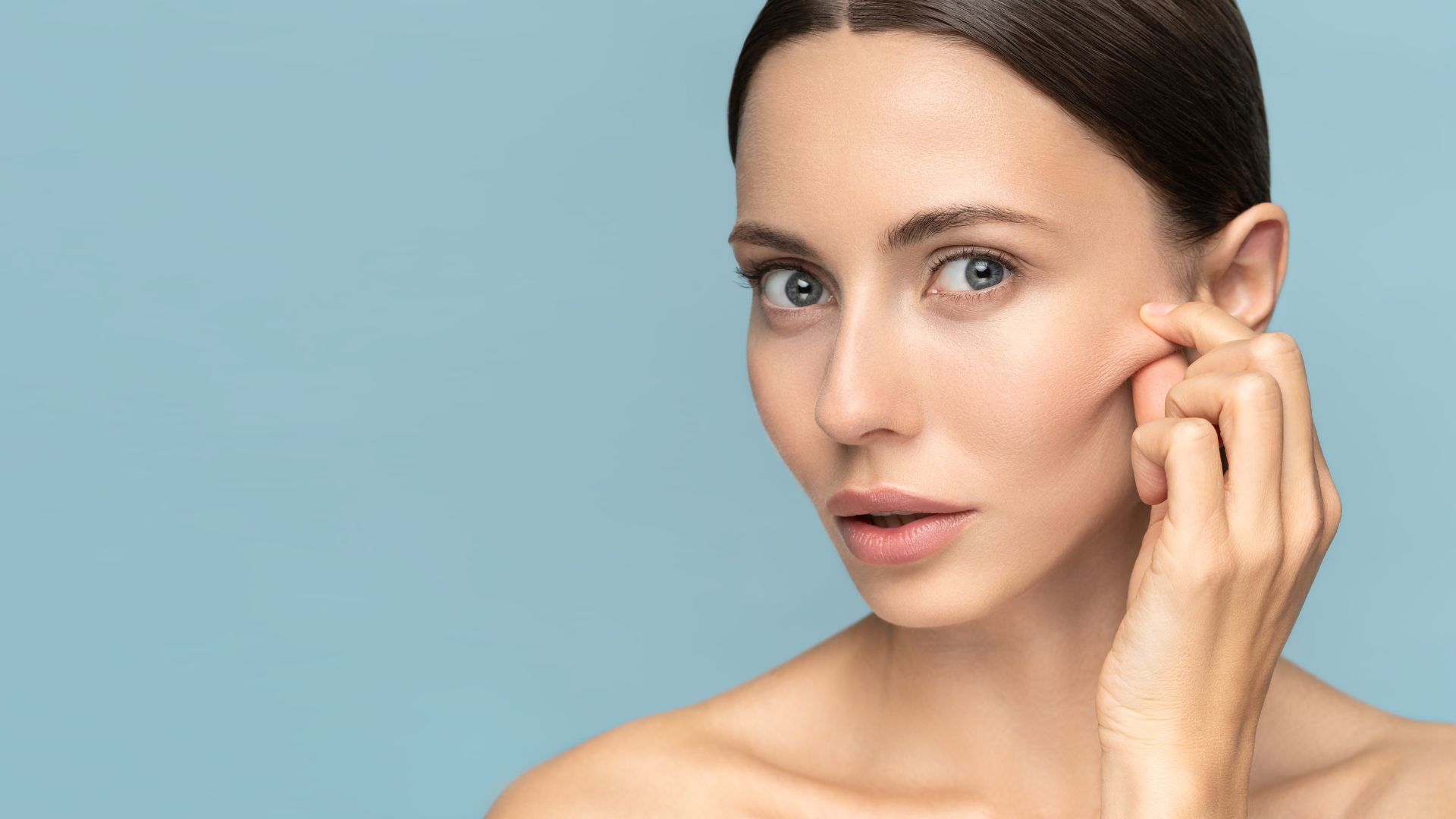
Radiesse is a unique dermal filler composed of calcium hydroxyapatite microspheres. It excels in elevating and shaping cheekbones while reducing nasolabial folds. This advanced treatment option replenishes lost volume in the cheeks and kick-starts collagen production, which is crucial for maintaining the skin’s firmness and elasticity.
This dermal filler uses calcium hydroxyapatite (CaHA) microspheres to restore lost volume and encourage the body to produce more collagen. These tiny spheres are the magic behind Radiesse’s ability to give cheeks a lifted, sculpted look right after treatment.
The beauty of this injectable filler lies not just in its immediate enhancement but also in how it continues to work over time by stimulating new collagen production, which improves skin elasticity and firmness.
Injection Techniques for Radiesse Cheek Augmentation
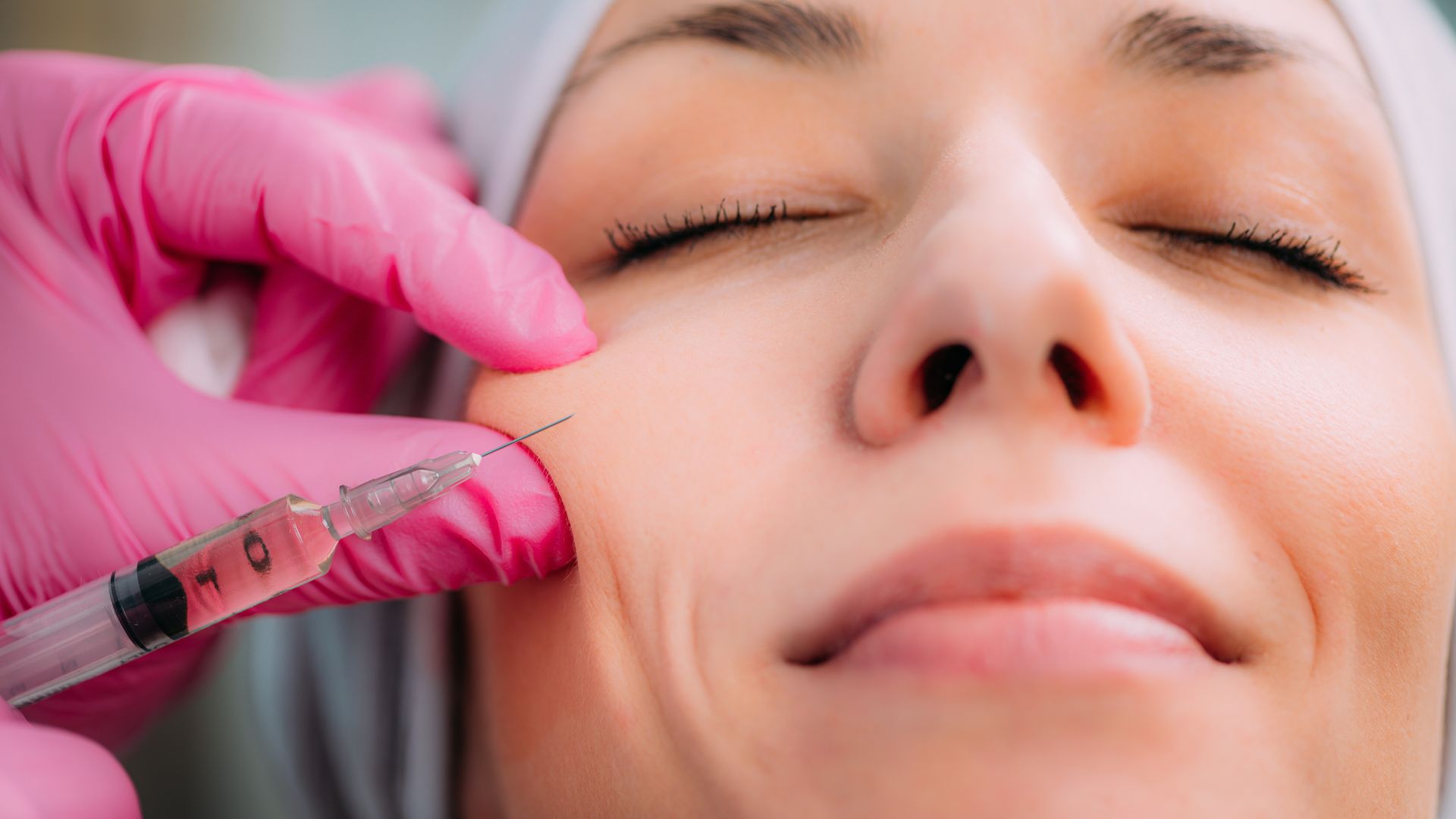
Preparing the Patient and the Treatment Area
Before beginning the Radiesse cheek augmentation procedure, thorough preparation of both the patient and the treatment area is essential. The patient should be informed about the treatment, expected outcomes, and potential side effects. A comprehensive medical history should be taken to rule out any contraindications.
The treatment area, primarily the cheeks, must be cleaned and disinfected to minimize the risk of infection. A topical anesthetic cream may be applied to numb the area and enhance patient comfort during the procedure.
Step-by-Step Guide to Injecting Radiesse for Cheekbones
Injecting Radiesse for cheek augmentation requires precision and expertise. Here’s a step-by-step guide to the process:
- Assessment and Marking: The practitioner begins by assessing the patient’s facial structure and marking the areas that need volume enhancement. These markings guide the precise placement of the filler.
- Anesthesia: Although Radiesse contains lidocaine, additional local anesthesia may be administered to ensure patient comfort.
- Injection Technique: Using a fine needle or a cannula, the practitioner injects Radiesse into the marked areas. The depth and angle of the injection are critical to achieving a natural look and avoiding complications. The practitioner may use the fanning technique or linear threading technique, depending on the specific needs of the patient’s facial anatomy.
- Molding and Shaping: After the filler is injected, the practitioner gently massages and molds the treated area to ensure even distribution and smooth contouring of the cheeks.
- Final Assessment: The practitioner assesses the symmetry and overall appearance of the cheeks, making any necessary adjustments to achieve the desired results.
Minimizing Discomfort and Bruising During the Procedure
Minimizing discomfort and bruising is essential during Radiesse cheek augmentation. Here are some effective strategies:
- Pre-Treatment Care: Advise patients to avoid blood-thinning medications and supplements, such as aspirin and fish oil, for a week before the procedure.
- Gentle Injection Techniques: Use a cannula instead of a needle to reduce tissue trauma and bruising. If using a needle, a steady and gentle approach is crucial.
- Cold Compresses: Apply cold compresses to the treatment area before and after injections to constrict blood vessels and reduce swelling and bruising.
- Post-Treatment Instructions: Recommend avoiding strenuous activities, excessive facial movements, and direct sun exposure for 24 hours post-treatment to minimize swelling and bruising.
By implementing these strategies, practitioners can ensure a more comfortable patient experience and reduce the risk of bruising during Radiesse cheek augmentation.
Patient Selection Criteria for Radiesse Cheek Augmentation
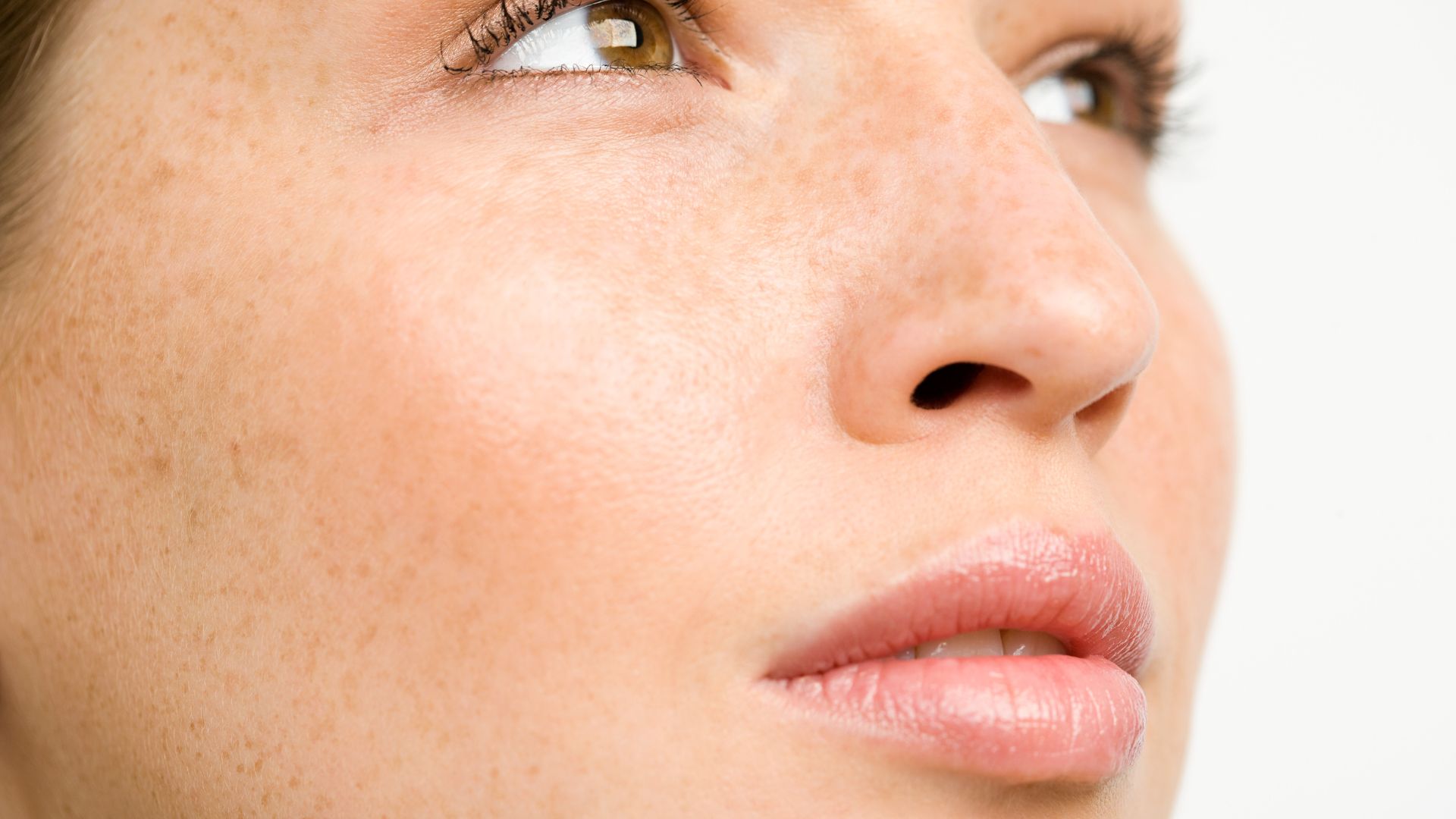
Assessing facial structure and symmetry is crucial in selecting patients for Radiesse cheek augmentation. A well-shaped cheek resembles one side of a heart, highlighting the importance of volume in creating an ideal facial contour. Identifying suitable candidates involves meticulously examining their facial anatomy to determine where volume enhancement is most needed.
This careful assessment ensures customized care tailored to each individual’s unique aging signs and desired results. Radiesse stimulates collagen production and provides an immediate volume boost, allowing medical professionals to address both aesthetic concerns and underlying structural changes due to aging.
Communicating with patients about what to expect from Radiesse cheek augmentation sets the stage for successful outcomes. Healthcare professionals should ensure that candidates understand the longevity of Radiesse results and explain any possible side effects or recovery time, providing a clear picture of what to anticipate.
Clinical Data and Efficacy of Radiesse for Cheek Enhancement
Patients often compare the efficacy of different treatments, such as Radiesse vs. Juvederm. However, Radiesse stands out for its impressive long-term results, which typically last between 12 to 18 months. This extended duration surpasses that of many other dermal fillers, making Radiesse a popular choice for cheek augmentation.
Radiesse boasts a solid safety record, and its hypoallergenic properties make it suitable for treating severe volume loss. Patient satisfaction rates are high, with many praising Radiesse for delivering refreshed, natural-looking results rather than dramatic changes.
Before-and-After
Before-and-after photos illustrate the significant transformations—cheekbones look uplifted, and faces seem more balanced.
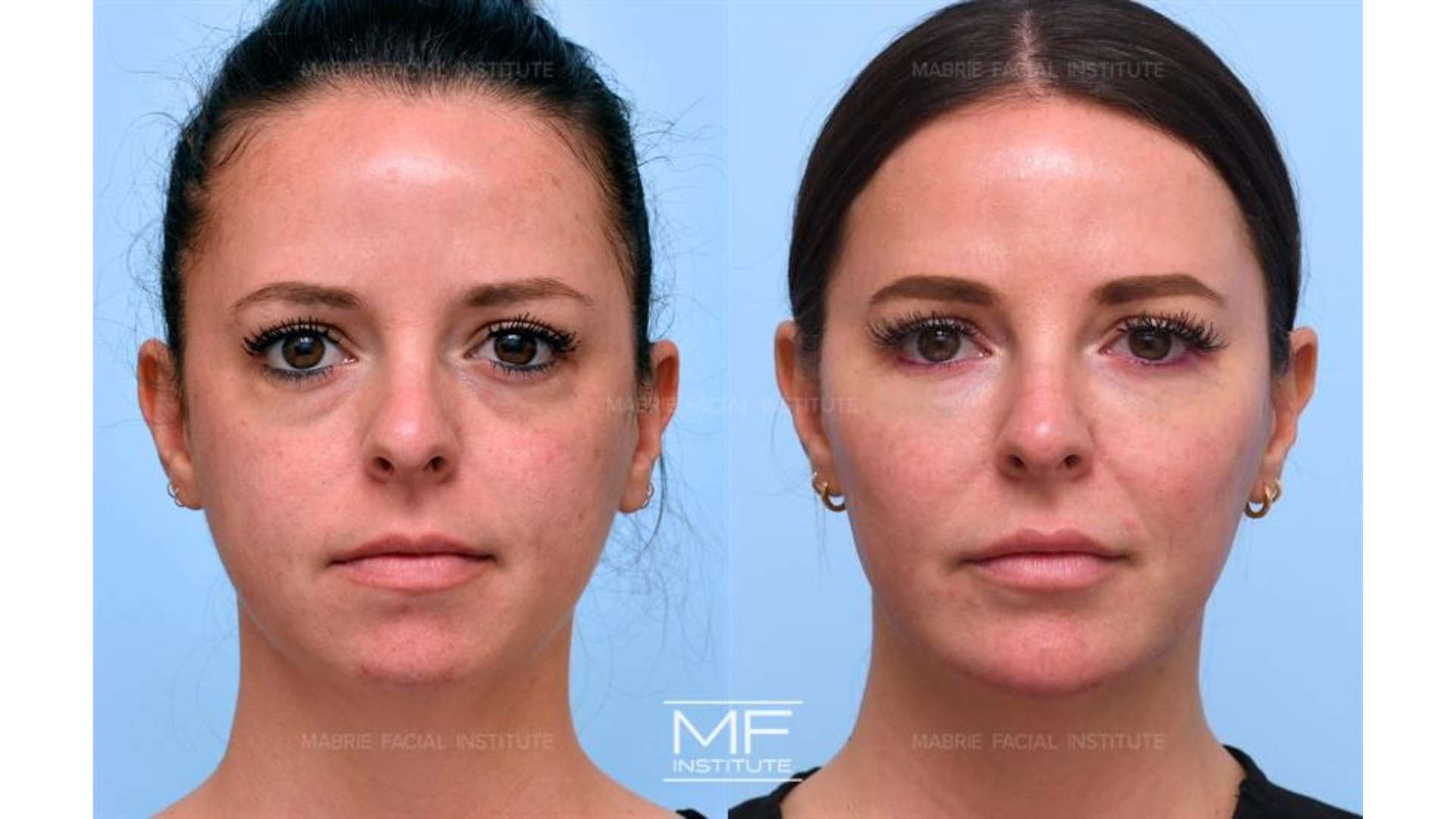
Image Courtesy of Mabrie Facial Institute
The cheeks appear flat and lack volume, contributing to a tired or gaunt look. There is a noticeable loss of youthful fullness, and the face lacks definition and contour, resulting in an overall aged appearance.
Post-treatment, the cheeks are fuller and more prominent, adding youthful volume and lift to the face. The enhanced contours create a more defined and balanced facial structure. The overall appearance is rejuvenated, with a healthier and more vibrant look.
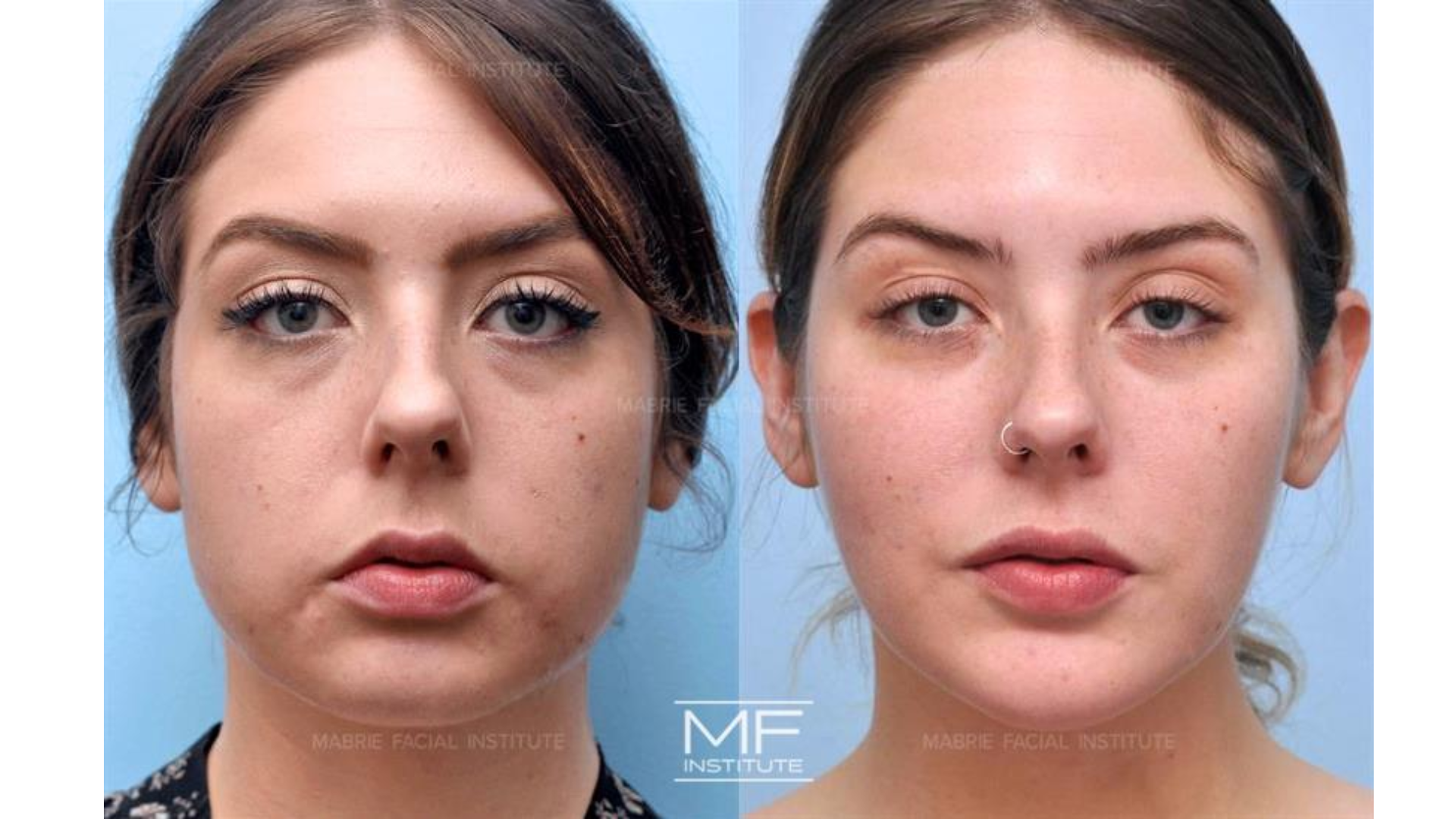
Image Courtesy of Mabrie Facial Institute
The cheeks show signs of aging, with sagging skin and a hollowed-out appearance. The mid-face area lacks the plumpness and vitality of youth, and the facial features appear less harmonious and less defined.
After cheek treatment, the cheeks are beautifully elevated and voluminous, restoring a youthful plumpness to the mid-face. The skin appears smoother and more lifted, and the facial features are more balanced and harmonious. Moreover, the rejuvenated cheeks give the face a refreshed and youthful glow.
Potential Side Effects and Aftercare Recommendations
Radiesse cheek augmentation is generally safe, but some common side effects may occur. These include mild swelling, redness, bruising, and tenderness at the injection site. These side effects are typically temporary and resolve within a few days.
To manage and minimize post-treatment discomfort, patients can apply cold compresses to the treated area to reduce swelling and bruising. Over-the-counter pain relievers, like acetaminophen, can help alleviate any discomfort. It’s important to avoid medications that can thin the blood, such as aspirin or ibuprofen, as they may increase bruising.
Aftercare Tips for Optimal Recovery and Long-Lasting Results
For optimal recovery and long-lasting results, patients should follow these aftercare tips:
- Avoid strenuous activities and exercise for at least 24 hours post-treatment to reduce swelling and bruising.
- Keep the head elevated, especially while sleeping, to minimize swelling.
- Avoid direct sunlight and extreme temperatures to prevent irritation at the injection site.
- Follow any specific instructions provided by the healthcare professional, including the use of recommended skincare products.
Conclusion
Lifting and sculpting cheekbones with Radiesse can transform the face in remarkable ways. This dermal filler goes beyond merely adding volume—it reshapes, enhances confidence, and helps turn back the clock.
With lasting results that brighten smiles and endure over time, choosing Radiesse is a step toward achieving facial harmony. For those seeking to enhance their appearance significantly yet subtly, Radiesse might just be the perfect solution.
After all, who wouldn’t want to feel as radiant on the outside as they do on the inside?
FAQs
1. What is Radiesse for cheekbones?
Radiesse is a non-surgical treatment to lift and sculpt your cheekbones, giving you a youthful appearance.
2. How does Radiesse work in lifting and sculpting the cheekbones?
Radiesse stimulates your body’s natural collagen production, resulting in lifted and sculpted cheekbones over time.
3. Are there any side effects from using Radiesse on my cheekbones?
Like most treatments, there can be side effects such as swelling or bruising at the injection site, but these typically subside within a few days.
4. How long do the results of using Radiesse on my cheekbones last?
Results vary from person to person, but Radiesse’s lift and sculpt effect on cheekbones generally last up to one year or more.
References
American Society of Plastic Surgeons. (2020). Cosmetic surgery national data bank statistics. Retrieved from https://www.plasticsurgery.org/documents/News/Statistics/2020/plastic-surgery-statistics-full-report-2020.pdf
Celibre Medical. (n.d.). Radiesse for cheekbone shaping. Retrieved from https://celibre.com/radiesse-for-cheekbone-shaping/
Plastic Surgery & Dermatology of NYC. (n.d.). Radiesse for cheekbones. Retrieved from https://www.plasticsandderm.com/radiesse-new-york.htm
Related Articles
Joanna Carr
Monovisc Vs Synvisc: Similarities And Differences Explained
Interested to learn more about Monovisc Vs Synvisc Similarities And Differences? Browse Doctor Medica's comprehensive listing of blog posts.
Joanna Carr
Lanluma Before and After – Results and Photo Gallery
See real Lanluma before-and-after results with photos showcasing its gradual collagen-stimulating effects for facial and body enhancement.
Joanna Carr
Jaydess vs Kyleena – Comparing Contraceptives
Jaydess and Kyleena are both hormonal IUDs that offer long-acting reversible contraception with different durations and hormone doses.


